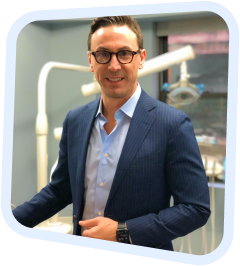How Sedation Works in Dentistry
There’s nothing to be ashamed of if you’re afraid to visit the dentist. Over 30 Million Americans have a fear of dentistry so severe that they avoid going to the dentist altogether and put their health at risk. But they shouldn’t be afraid. If you need help getting over your fear of the dentist, then you have options. The quickest and easiest way to keep you calm during your next dental is conscious sedation, and there are many types available.
The Two Different Types of Sedation
Sedation can be split into two different categories: conscious and unconscious sedation. The one that will best work for you depends on both how nervous you are about your dental appointment and how extensive the procedure is.
- Conscious sedation: You are calm and somewhat alert. You may even feel a pleasant sensation. And while there are various levels of conscious sedation, it is still possible to wake you up (though with increasing difficulty the deeper your sedation is).
- Unconscious sedation: You are unconscious. You are not alert and waking you requires a combination of medications used to reverse the anesthesia and time.
Different Levels of Conscious Sedation
There are also different levels of dental sedation. These depend on the kind of medications you receive to help put you at ease during your next dental procedure. They can range from mild to deep (conscious sedation) all the way to general anesthesia (unconscious). These are the different stages and what you can expect to experience at each level of sedation dentistry:
- Minimal Sedation (Anxiolysis): You will feel relaxed, perhaps a little light-headed, and might even feel good about the procedure. You can breathe on your own, but you may feel a little loopy and your coordination can be impaired.
- Moderate Sedation: You’ll feel the effects of the sedation as you slur your words slightly and your coordination becomes impaired. But you’ll still be able to breathe fine and respond to questions and requests.
- Deep Sedation: You’ll feel very sedated as you drift near unconsciousness. You can be woken, but it’s not easy. And you won’t remember much of the procedure. Some patients will need assistance breathing.
***General Anesthesia: You’ll be completely unconscious. You won’t feel pain, and you won’t be able to respond to stimuli (even pain) or wake up on your own. This is unconscious sedation.

Are Dental Sedation and Anesthesia the Same?
While similar, dental sedation and anesthesia are quite different. Anesthesia puts you in an unresponsive, unconscious state. You’ll need medication in the form of both IV and gas to reach unconscious sedation. And you’ll need to be monitored by an anesthetist during the procedure.
Some patients even need help breathing. Dental sedation, also known as twilight dentistry, puts you in a sleepy state where you are still responsive even though you may be a bit groggy.
The Methods of Dentist Conscious Sedation
There are various ways you can be sedated for your dental appointment. Each one has a purpose and your dentist will carefully discuss the right sedation choice for you. There are some things to consider. If being too sedated makes you anxious, you’ll want to communicate that with your local dentist. And if you’re extremely nervous about your appointment, be sure to share that as well.
The more open you are about your dental fears, the easier it will be for your dentist to choose the right type of dental sedation for you. Here are the most common methods for conscious sedation:
Nitrous Oxide (Laughing Gas)
This is a very common sedative used during many dental procedures. It helps patients calm down easily and wears off quickly. It’s safe (there are no known allergies and few side effects). You’ll breathe the nitrous oxide in at the start of your procedure. Within minutes, you’ll feel relaxed and your skin may tingle. Most patients can drive home afterward.
Oral Sedation
For patients with a greater fear of the dentist or needles, they will get a prescription pill to take before their appointment. Usually, the medication for dental sedation is Halcion. However, Lorazepam and Diazepam can be used. These pills all belong to the benzodiazepine family and are used to treat anxiety.
After about an hour, you’ll feel a deep sense of relaxation. Your memory of the procedure can be foggy and motor skills can be impaired. But you’ll still be conscious. For oral sedation, you should arrive at your appointment with someone to help you get home afterward because you shouldn’t drive.
Intravenous Sedation (IV)
For more severe forms of dental anxiety, your dentist may recommend IV sedation. Your dentist will place an IV into your vein to administer sedatives. Because the medication goes directly into your bloodstream, the effects are rapid. However, a fear of needles can be an issue for patients and other methods may need to be used to either sedate or distract patients for the placement of the IV.
Sometimes, your dentist will need to use a combination of IV sedation and other forms of dental sedation. For people who are afraid of needles, a pill sedative may be offered before starting an IV. And it is common for both gas and IV sedation to be used at the same time as well.

Where Can You Find Conscious Sedation in NYC?
Don’t suffer through dental anxiety. And don’t avoid the oral health care you deserve because of fear. If going to the dentist makes you afraid, then speak to a dentist near you about dental sedation. And if you live in Manhattan, you should check out Advanced Dental Arts. We’re a top-rated, New York City-based dental practice located near you.
Our dynamic team of board-certified dental specialists has an extensive background with sedation dentistry. We will walk you through what to expect so you can put your mind at ease. Whether you use Cigna, Delta, Aetna, and many other kinds of insurance, Advanced Dental Arts will work with you to help ease your anxiety, giving you a pleasant dental visit
Don’t waste any more time with your dental fears. Reach out to us and book your next dental appointment today!






